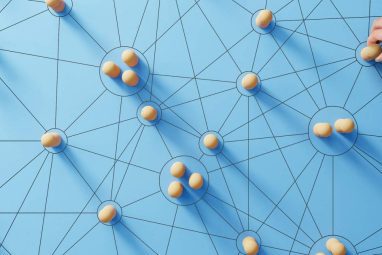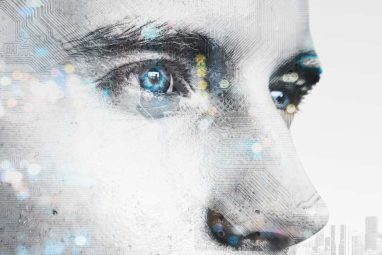Let’s Rethink Everything
When he talks, Brian Solis, Global Innovation Evangelist at Salesforce, digital anthropologist and futurist and author of eight books, including The Experience When Business Meets Design, uses the words challenge and opportunity interchangeably. The pandemic, he says, is an opportunity to reimagine the way customers experience a brand by considering changing consumer behaviour and redefining brand […]
Topics

When he talks, Brian Solis, Global Innovation Evangelist at Salesforce, digital anthropologist and futurist and author of eight books, including The Experience When Business Meets Design, uses the words challenge and opportunity interchangeably. The pandemic, he says, is an opportunity to reimagine the way customers experience a brand by considering changing consumer behaviour and redefining brand loyalty. Those who don’t adapt run the risk of being obsolete.
Excerpts of his conversation with Ravi Raman, Publisher of Martechvibe
The pandemic challenged our adaptability. How well have marketers adapted?
It’s hard to group marketers as a whole. Over the last decade, we have seen they are getting more specialised in terms of personalisation or direct engagement. Marketers who focused on personalisation, growth, performance, etc., were able to really drive outcomes against factors they were measured against.
Some of the best marketing I have seen is in the direct to the consumer category. These brands had everything to gain and everything to lose. They had a different mindset. I have a philosophy I talk about called Constraint Forces Creativity. When you have to win, you win. But generally, there is an opportunity for all marketers to grow and reimagine themselves.
We saw that AI, ML, automation had accelerated digital transformation. That allows marketers to really plug into data sets to get a robust and rich 360-degree view of the customer. Once we start mining existing data sets, we can put them into platforms to make sense of it. Then, we power a more cross-functional form of engagement that marketing can actually use to lead the evolution of customer experience. Somebody has got to own it. Somebody has to say — this is the standard of customer experience for our organisation. Then, they have to work cross-functionally to make sure all of the data is actionable to set an experiential standard.
In the Salesforce State of Marketing Report 2020, we saw that the top companies were owning it – owning the experience. Here, marketing shares a CRM system with sales and service. That is a more complete view of the customer than we have ever had.
Marketers have the opportunity to lead what customer experience could look like. To lead real, true, honest personalisation. Whether the customer is being marketed to, in a service route or in purchase mode, the company must know who they are, know their history, etc. This will help deliver better actions and better support.
In the last few years, brand loyalty was stretched to the max. What have successful brands done to win the hearts and minds of their consumers?
The concept of loyalty is up for complete reimagination now. I’ve had four conversations about it in the last week, four more times than I’ve had this conversation in the last two years.
I’m a digital anthropologist, so all of my research has been focused on how this pandemic has changed consumer behaviour. But it hasn’t only changed behaviours, it has changed customer values. In the pandemic, people began to reimagine their definition of success, they questioned the meaning of life. It was quite philosophical. They decided that where they would spend their money would be different. They became more conscious. Trustworthiness was at the top of the ladder as customers prioritised being loyal to a brand. It meant that customers were observing how brands reacted during the pandemic. In fact, 31 per cent said they trust the brand less.
It’s important to ask yourself; what does your brand represent, and does it align with your customers’ values? How do you earn their business and loyalty?
“The pandemic was disruption, and now this is the next wave of disruption.”
In a research that we were working on, 61 per cent of customers had stopped doing business with brands whose values didn’t align with theirs. A Mckinsey report found that the numbers are equally high but different in every country. In the US, 75 per cent tried a new brand during the pandemic and are going to stick with it.
What that says is that what used to be considered loyalty doesn’t exist anymore. Loyalty is up for grabs. Here, retention becomes critical, acquisition becomes an opportunity. Marketers must realise there is a sense of emergency to retain the customers in their loyalty programme. Miles, points and cards aren’t enough anymore. There needs to be a human dynamic to it. They have to go back and understand who their customers are and how their loyalty and behaviours have changed in the last year.
Loyalty itself is a function of the experience that the customer has with the brand. If you constantly inundate them with emails and messages that are not personal, if customer service is maddening, that’s all going to work against the brand. Look for places in the journey where things are broken, or there is friction. First, you create value, then build loyalty.
What is digital Darwinism? How can brands survive?
I didn’t invent the concept, but I started talking about Digital Darwinism in the nineties. It started because of Amazon, consumerisation of the internet, digital cameras, which lead to online photo sharing, app store economies, social media, etc. Every single one of those waves fundamentally shifted human behaviour. It was 1999 when online photo sharing had started to ramp up. Just a year earlier, families had said they would never share pictures of their families online. Now, of course, you can’t have a moment without posting it online, sharing friends, family, and even food. I study behaviour change.
When behaviour changes fundamentally, so do expectations, preferences, relationships, how you communicate, how you connect. It’s not always for the better, but it changes.
I help businesses build bridges to cope with these changing behaviour trends. Over time, customers stop coming back to experiences that don’t align with their behaviours. For example, taxis versus Uber. Once you experience something so personal and profound, anything other than that seems outdated till it becomes obsolete. That sets the fundamental line for Digital Darwinism. At some points, customers evolve beyond your business’ ability to keep up with them. It doesn’t happen overnight. It happens over time. But it’s important to always be in touch with understanding customers.
It isn’t the strongest that survive, it is those that can adapt.
During the pandemic, this has accelerated dramatically. So it’s a critical opportunity for businesses to react in a unified manner. It’s not only about digitising but looking at the concept of marketing itself. A lot of the processes have been around since paper was the main medium. Paper-based models don’t apply anymore.
Innovation happens to you or because of you. This is a time for invention, and marketing is in dire need of being the saviour within the organisation. Marketing has the ability to bring back those insights that will lead digital transformation in a meaningful way.
Data sits in the centre of all this. How do you see marketers viewing the data they have and the data they need to acquire?
Do you have a 360-degree view of your customer? Most customers feel that their experience is not integrated. It’s not surprising that most customers want an integrated experience. Barely any company around the world has been able to achieve this. All companies, of course, want this. The more progressive ones are realising that they need to move in this direction, but the challenge is in operational models and connecting silos where data resides. Someone has to own this task.
Someone has to lead the connection to AI and automation and put it into platforms and dashboards so we know how to read it.
Electronic Arts, a California based video game company were able to reimagine marketing, data and product support as a function together by combining the task under the leadership of the CMO. He wanted these functions to work together to respond cohesively in real-time. It’s a great undertaking.
The irony is that those companies who don’t have this 360-degree view say they are customer-centric. What does that mean? Marketing teams should be raising the flag on behalf of the consumer. So that customers and businesses can have better experiences.
Do you see the front and back office merging? Is that how we can own the journey?
Every organisation has their own politics that they have to deal with. Marketing doesn’t need to own everything, but it should lead it. Someone has to drive this, and we’ve been through the arguments about who that should be. Do we need data engineers, scientists – we sure do.
Who represents the customer in critical decisions within the company? The CMO can be the steward or the lead of a steering committee charged with this customer 360-degree approach. Finance and IT should be a part of that committee.
The CMO must say, I’m responsible for all these other forms of engagement. Do I want to lead the future of marketing or be responsible for the functioning? IT went through this a while ago where it was at a crossroads. It’s the difference between IT maintaining functions or leading the digital transformation.
Do you see the emergence of a Chief Experience Officer?
I’m not a proponent of crafting roles that are lofty and not necessarily tangible. But I am all for creating a role that helps set responsibility and accountability. What is the customer’s experience if they were going to describe it back to you later? The customer’s experience comes with an apostrophe. It’s their perspective, it’s the sum of all engagements they have with your brand that could include packaging, email, customer service. Apple does it well. Jeff Bezos said – your brand is what someone says when you are not in the room.
No one talks about what experience means. Experience is an emotional reaction to something. If I get a bland email, I forget it. If I get bad customer service, I will remember it. If I get good customer service, I will remember it. Everything in between good or bad is forgettable. They add up to the way I will retell that story. Experiences become memories, memories become expressions, and expressions become the brand.
The role of this leader is to say – this is what I want somebody to feel and think when they use our products, experience our brand. Somebody who will define what that experience is and be accountable for it. That person would have to work cross-functionally to deliver the experience through the journey. If it were a movie, it would be like designing a storyboard. I believe that if we thought about CX as a Disney amusement park, you would design it very differently.
I read Trailblazer: The Power of Business as the Greatest Platform for Change by Marc Benioff, it puts the human side of the business at the core. Defined as equity, trust and innovation.
Let’s take this Control. Alt. Delete moment to rethink everything. Let’s not get back to normal. Let’s create the future you want to see.








































































































